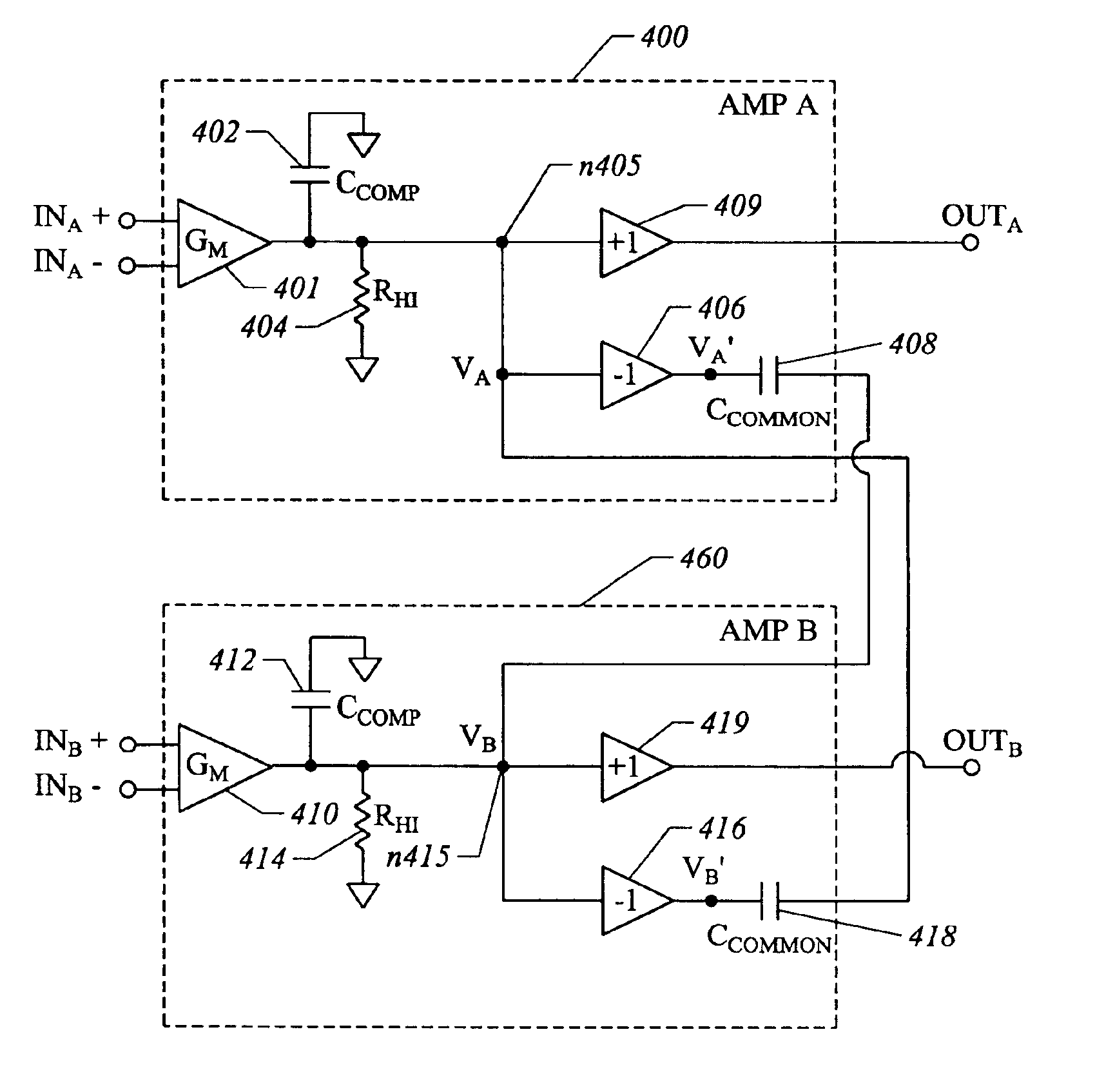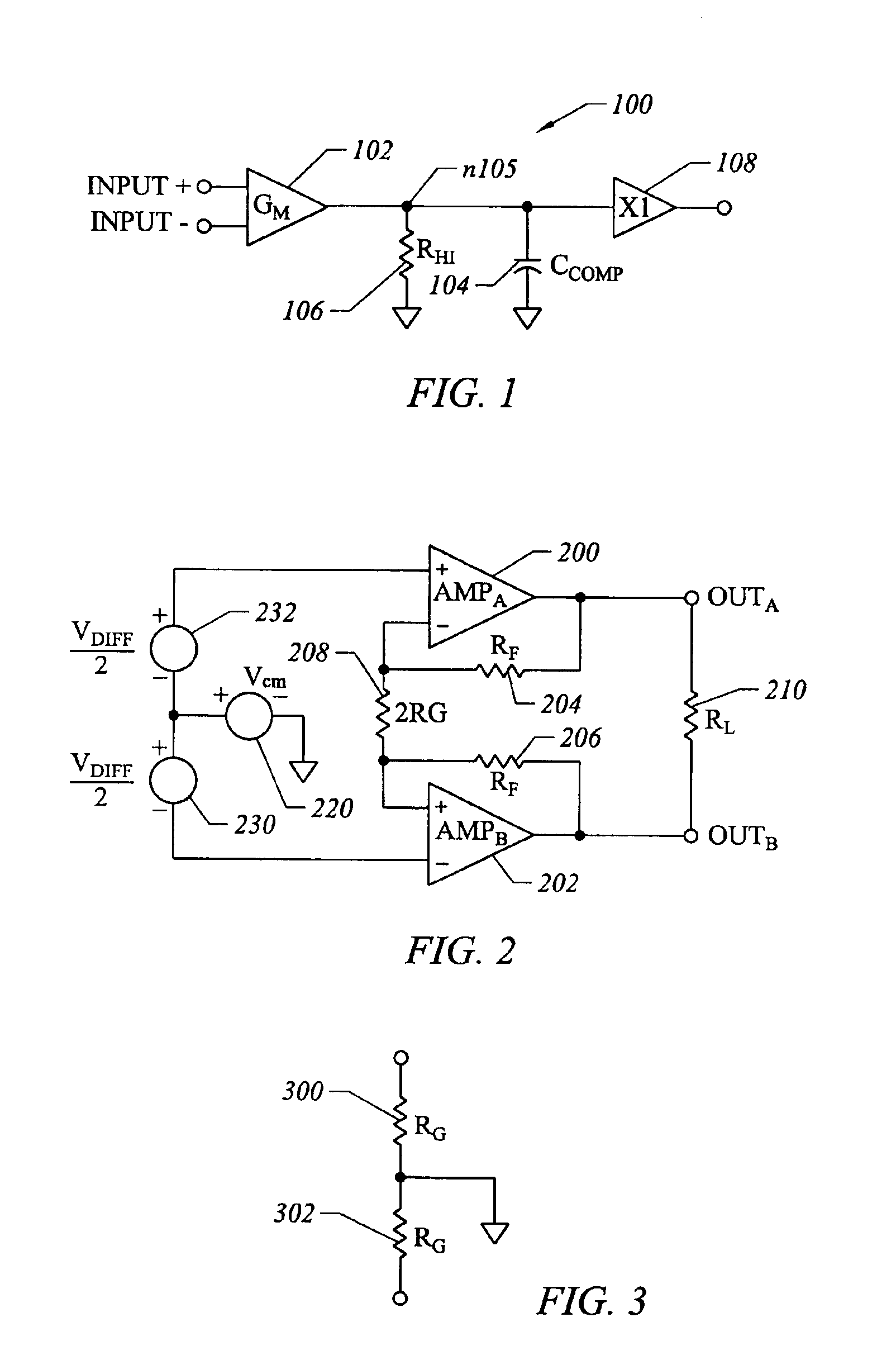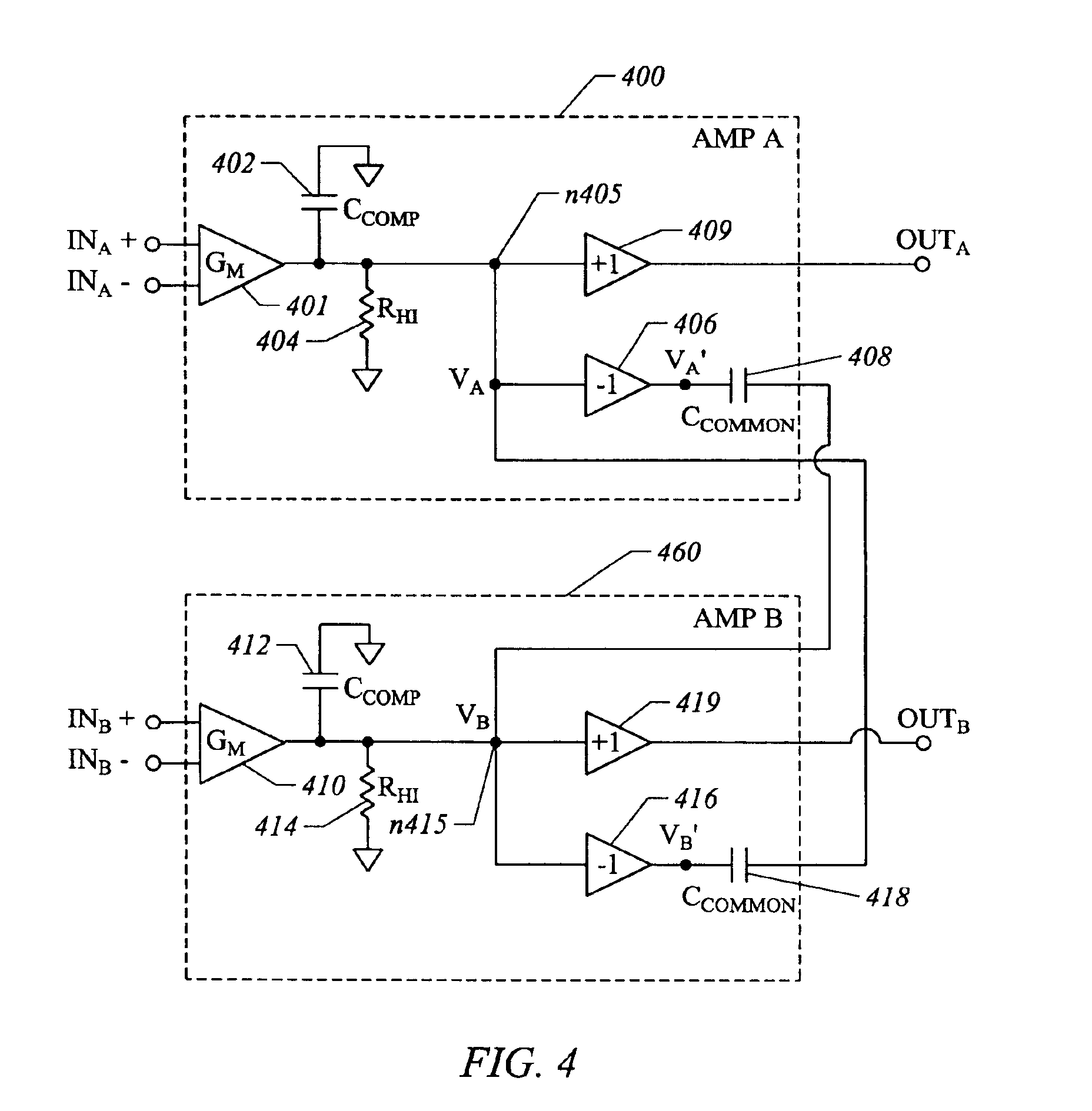Common-mode and differential-mode compensation for operational amplifier circuits
a technology of differential mode and amplifier circuit, which is applied in the direction of differential amplifier, amplifier with semiconductor device/discharge tube, amplifier details, etc., can solve the problems of limiting the overall amplifier performance, lowering signal bandwidth and slew rate, and still different impedances,
- Summary
- Abstract
- Description
- Claims
- Application Information
AI Technical Summary
Benefits of technology
Problems solved by technology
Method used
Image
Examples
Embodiment Construction
FIG. 4 shows an operational amplifier using a compensation technique in accordance with embodiments of the present invention. The circuit of FIG. 4 includes two amplifiers, AMPA 400 and AMPB 460. The amplifier AMPA 400 includes a transconductance amplifier 401, high impedance node resistor 404, compensation capacitor 402, and output buffer 409, similar to the components of FIG. 1. Similarly, amplifier AMPB 460 includes a transconductance amplifier 410, high impedance node resistor 414, compensation capacitor 412, and output buffer 419, as in FIG. 1.
Unlike the components of FIG. 1, the amplifier AMPA 400 further includes an inverter 406 and common mode compensation capacitor CCOMMON 408 connected in series. The input of the inverter 406 is connected to the gain node n405 of the amplifier AMPA 400, and the output of the capacitor CCOMMON 408 is connected to the gain node n415 of the amplifier AMPB 460. Similarly, the amplifier AMPB 460 includes an inverter 416 and common mode compensa...
PUM
 Login to View More
Login to View More Abstract
Description
Claims
Application Information
 Login to View More
Login to View More - R&D
- Intellectual Property
- Life Sciences
- Materials
- Tech Scout
- Unparalleled Data Quality
- Higher Quality Content
- 60% Fewer Hallucinations
Browse by: Latest US Patents, China's latest patents, Technical Efficacy Thesaurus, Application Domain, Technology Topic, Popular Technical Reports.
© 2025 PatSnap. All rights reserved.Legal|Privacy policy|Modern Slavery Act Transparency Statement|Sitemap|About US| Contact US: help@patsnap.com



